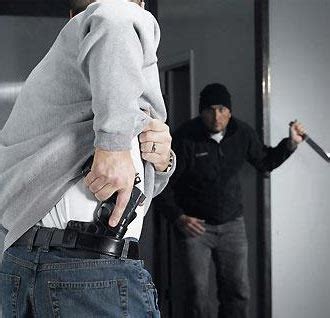April witnessed a steady stream of tragic cases involving claims of self-defense, including the shootings of Ralph Yarl and Kaylin Gillis, and the case of Antonio Caccavale, who allegedly shot at two Instacart drivers attempting to make a delivery after they pulled into the wrong driveway. Then of course, there is the death of Jordan Neely.
These cases, and others like them, understandably generated torrents of reporting. Unfortunately, legal commentators on all sides of the political divide bungled self-defense basics. In so doing, they both dangerously misinformed the public and impeded an honest discussion about the role of defensive force and gun control in a modern, pluralistic society.
A Washington Post reporter discussing the Yarl case, for example, wrote that stand your ground laws allow defenders to respond with violence, up to and including deadly force, immediately upon “perceiving a threat in a place where they have a right to be.”
The New York Times similarly offered that US castle doctrine and stand your ground provisions afford greater protections to those who act pursuant to “misjudgments and mistakes.” It then doubled down by proclaiming that castle doctrine laws accord individuals in their homes a “legal presumption” that their defensive acts against an intruder were lawful.
These claims about US self-defense law are bold and attention-grabbing. But they are also wholly wrong—wrong not as a matter of moral judgment or public policy preference but as a matter of basic, undisputable law.
For starters, simply “perceiving a threat” when you are in a place where you have a right to be is never, without more, enough to trigger deadly defensive force, neither in Missouri nor in any other state in the Union.
Nor do either the castle doctrine or stand your ground provisions generate greater leeway for mistakes or, in any other way, produce a pro-defensive-force “presumption.”
Instead, stand your ground laws merely remove any otherwise existing state law duties to retreat when the defender could have retreated in complete safety.
What those reporting on these cases either don’t understand, or for whatever reason don’t want to understand, is that the violence-reducing fundamentals of US self-defense law remain fully operational. Most significantly, a person claiming self-defense in the US must have been objectively reasonable in his or her belief, even if mistaken, that defensive force was necessary to thwart the perceived attack. The reporting notwithstanding, neither stand your ground nor castle doctrine provisions impact these foundational self-defense requirements.
Of course, the perils of misinforming the public are the same, regardless of which side of the ideological divide births them.
Consider when Fox, on Feb. 9, 2023, while reporting on Arizona rancher George Alan Kelly’s alleged killing of a Mexican migrant, without qualification, asserted that “Arizona . . . allows residents to shoot trespassers on their property.”
Arizona law permits no such thing. Nowhere in the US, in fact, can a person resort to deadly force to prevent a simple trespass. This, then, is just another recent example of commentators spreading risky misinformation.
Even beyond using deadly force against trespassers, in the US, deadly force to defend mere property has long been unlawful.
Although reasonable force is permitted to defend both personal property and dwellings, and deadly force can, in some states, be used to prevent an attacker from committing serious crimes in a dwelling, it is never OK to kill an attacker solely to protect property. (The only counterexample is a strangely narrow one: Texas unusually permits deadly force to stop a burglar, robber, or thief from escaping with the property at nighttime when no other safe means of recovery are available.)
And even by international comparison, US self-defense is surprisingly vanilla. England and Germany reject a categorical requirement that the defender either avoid conflict or retreat once the conflict is imminent. The same is true for legally, politically, and culturally diverse countries ranging from Argentina, Botswana, Canada, France, and Nigeria to Ghana, Indonesia, Japan, Spain, and Sweden.
Casting US self-defense law as more extreme to appeal to a particular ideological base is perilous. Telling people they can kill mere trespassers, use deadly force to defend property, and shoot at will when they are in their house because the law will judge any mistake in their favor is indefensible. Spreading such misinformation puts lives at risk and distorts our public dialogue. Members of the legal commentariat can and must do better.


Surprisingly I agree with everything the author is saying. Using deadly force should always be a last resort.